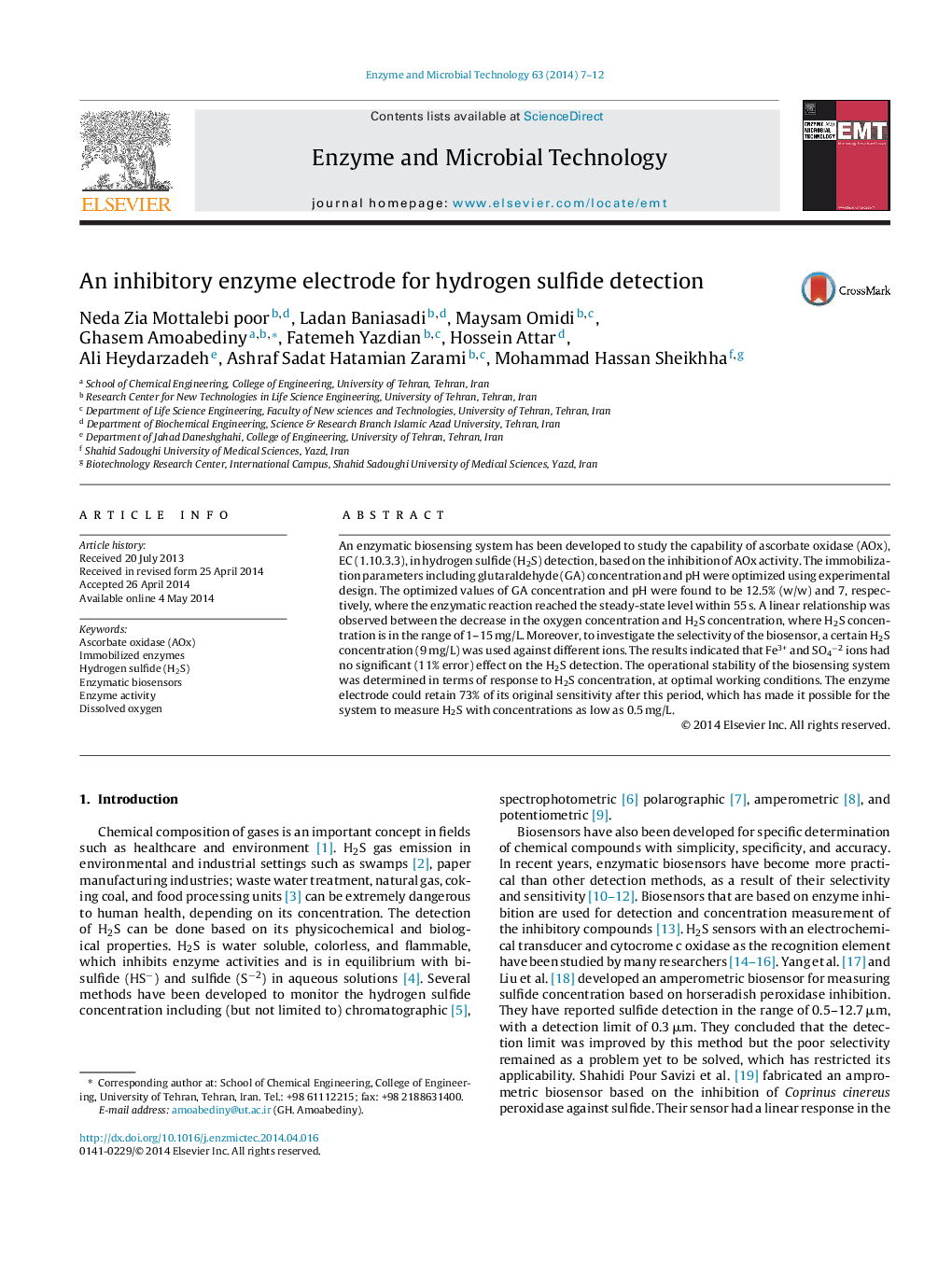| Article ID | Journal | Published Year | Pages | File Type |
|---|---|---|---|---|
| 17161 | Enzyme and Microbial Technology | 2014 | 6 Pages |
•AOx was used as the biosensing part for H2S monitoring.•The enzyme was immobilized on nylon membrane.•The immobilization process was optimized.•The immobilized enzyme has better activity than the free enzyme.•The oxygen depletion was showed enzyme inhibition by H2S.•The inhibition process was optimized.
An enzymatic biosensing system has been developed to study the capability of ascorbate oxidase (AOx), EC (1.10.3.3), in hydrogen sulfide (H2S) detection, based on the inhibition of AOx activity. The immobilization parameters including glutaraldehyde (GA) concentration and pH were optimized using experimental design. The optimized values of GA concentration and pH were found to be 12.5% (w/w) and 7, respectively, where the enzymatic reaction reached the steady-state level within 55 s. A linear relationship was observed between the decrease in the oxygen concentration and H2S concentration, where H2S concentration is in the range of 1–15 mg/L. Moreover, to investigate the selectivity of the biosensor, a certain H2S concentration (9 mg/L) was used against different ions. The results indicated that Fe3+ and SO4−2 ions had no significant (11% error) effect on the H2S detection. The operational stability of the biosensing system was determined in terms of response to H2S concentration, at optimal working conditions. The enzyme electrode could retain 73% of its original sensitivity after this period, which has made it possible for the system to measure H2S with concentrations as low as 0.5 mg/L.
